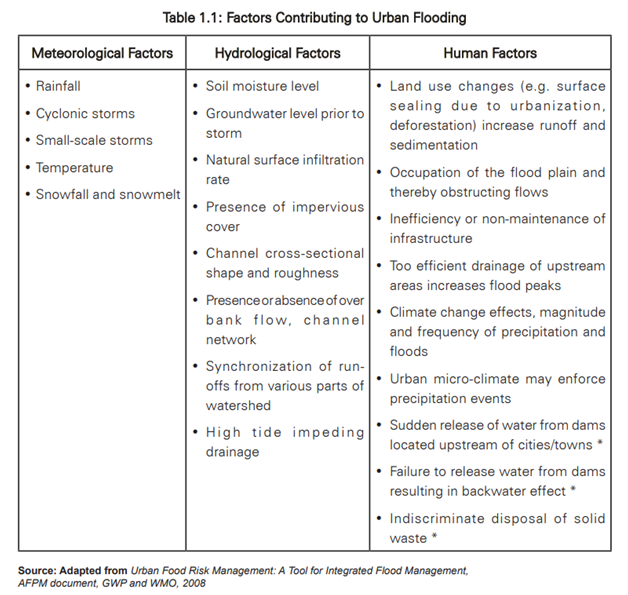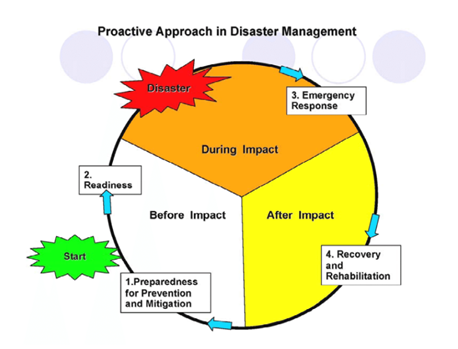

Mumbai once again struggled to stay afloat after the first heavy spell of rain this year, bringing back memories of the July 2005 flood. Each massive rainfall event is making it evident that the city is putting on a brave front and projecting resilience, but the failure of the Maharashtra government to upgrade its tattered infrastructure is taking a heavy toll and weighing down on the financial capital.
Issue
Context:
- Mumbai once again struggled to stay afloat after the first heavy spell of rain this year, bringing back memories of the July 2005 flood. Each massive rainfall event is making it evident that the city is putting on a brave front and projecting resilience, but the failure of the Maharashtra government to upgrade its tattered infrastructure is taking a heavy toll and weighing down on the financial capital.
Background:
- Following flooding in Mumbai last month and the severe water crisis that the city of Chennai is still facing, the Kerala floods are yet another reminder of the vulnerabilities faced by coastal cities in India.
- India has a long coastline of 7,500 km and an estimated 14% of India’s total population lives alongside it that traverses nine states, 77 towns and cities including some of the fastest-growing such as Mumbai, Chennai and Kochi making them more prone to flood due to adjacent sea and erratic monsoonal behavior.
- Aside from the present danger posed by extreme weather events such as heavy rainfall and cyclonic storms, more slow-onset impacts brought about by climate change also threaten the coastline. A 2016 UN report estimated that 40 million people in India will be at risk from sea-level rise by 2050.
Urban Flood:
- Flood is defined as “an overflow of a large body of water over areas not usually inundated”. Thus, flooding in urban areas is caused by intense and/or prolonged rainfall, which overwhelms the capacity of the drainage system.
- The coastal urban flooding is a complex phenomenon which may occur in various forms such as: urban flooding due to high intensity rainfall; due to inadequate drainage and flooding caused by overtopping in the channels or rivers; flooding due to high tides, etc.
- For effective coastal urban flood management and mitigation plans, the possible flooding scenario is to be simulated for extreme rainfall events, or various return periods of rainfall and other design scenarios.
Major threats that Urban Floods poses:
- Economic: Urban areas are also centers of economic activities with vital infrastructure which needs to be protected 24x7. In most of the cities, damage to vital infrastructure has a bearing not only for the state and the country but it could even have global implications. Therefore, management of urban flooding has to be accorded top priority.
- Urban Planning: Increasing trend of urban flooding is a universal phenomenon and poses a great challenge to urban planners the world over. Problems associated with urban floods range from relatively localized incidents to major incidents, resulting in cities being inundated from hours to several days.
Reasons for Urban Flooding:
- Urban flooding is caused by three main factors – meteorological, hydrological and human factors.
- Meteorological factors include heavy rainfall, cyclonic storms and thunderstorms.
- Hydrological factors include presence or absence of overbank flow channel networks and occurrence of high tides impeding the drainage in coastal cities.
- Human factors include land use changes, surface sealing due to urbanization (which increases run-off), occupation of flood plains and obstruction of flood flows, urban heat island effect (which has increased the rainfall in and around urban areas), etc.
- Urbanisation: Rapid urbanization combined with a lack of efficient waste disposal systems have left several water bodies in the cities in poor condition. Blocked waterways and reduced width and depth of canals, while the speed and scale of construction reduces the permeability of the ground.
- Improper Drainage: In Indian cities and towns, large habitations are coming up in low-lying areas, often encroaching over drainage channels. Encroachment in the immediate upper catchments of hilly urban area has also caused serious flooding in the flood plains of cities surrounded by hills.
- Population Growth: Most of our cities have now reached a saturation point in terms of population growth and accommodation, and the developmental activities have now shifted to low-lying areas and areas next to the riverbanks. So, whenever a city experiences a large amount of rainfall within a short time, there are chances it gets flooded.

Measures to prevent Urban Flooding:
- Early Warning System and Communication: Dissemination of flood warnings must be carried out, using a wide range of latest technologies. This would help in giving real time data where traditional systems fail.
- Design and Management of Urban Drainage System: Proper management of drainage system is necessary to ensure that the water does not get stored in one place. Solid waste increases hydraulic roughness, causes blockage and generally reduces flow capacity. These drains need to be cleaned on a regular basis to permit free flow of water.
- Rainwater Harvesting: Due to urbanisation, groundwater recharge has decreased and the peak runoff from rainfall and consequent flooding has increased. It will serve the twin purposes of lowering the peak runoff and raising the ground water table. Many municipal corporations in India have already made rainwater harvesting compulsory.
- Conservation of Water Bodies: Urban water bodies like lakes, tanks and ponds also play a very important role in the management of urban flooding by reducing the stormwater run-off by capturing it.
|
Yokohama Strategy
|
Issues in Urban Flood Disaster Risk Management:
- Improper Risk Assessment: Risk assessment has not been done properly by the concerned departments.
Solution-This can be achieved by improving institutional capacities and operational abilities based on local scale vulnerability analysis and risk assessment.
- Improper designing of drainages: Storm water drainage systems in the past were designed for rainfall intensity of 12 – 20 mm. These capacities have been getting very easily overwhelmed whenever rainfall of higher intensity has been experienced.
- Encroachments: Encroachments have led to the decrease in natural capacities of natural drains. This have led to the disturbance in the natural flow of the rivers, lakes, etc.
- No Community Participation: Flood control measures planned without participation of affected community are unsustainable as they do not meet the needs of relevant stakeholders.
Way Forward:
- Mainstreaming Disaster Management into Development: All existing and new developmental programmes and projects shall incorporate disaster resilient specifications in design and construction.
- Role of Nodal Ministry: The nodal ministry should evolve its disaster management plans for holistic and coordinated management of urban flood emergency. The Central Government needs to make arrangements for implementing the National Plan on an inter-ministerial or inter-institutional basis.
- Implementing the Guidelines: Implementing the Guidelines at the national level should begin with preparing the National Plan. NEC or the concerned ministries/ departments should identify appropriate agencies, institutions and specialists with expertise in relevant fields to include them in disaster management planning.
- Financial Arrangements for Implementation: According to WMO, US $1 invested in disaster mitigation can prevent about US $7-worth of disaster related economic losses. Thus, financial strategies should be worked out in such a way that necessary funds are in place and their flow for implementing the UFDM plan is organised on a priority basis.


